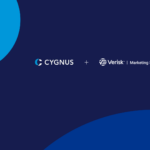Part 3: What’s in store for Performance Marketers in the Insurance Industry – Intelligence from the Life Insurance Segment
The insurance industry continues to evolve as consumer trends, technology and compliance all impact the way that insurance is bought, sold and serviced. To help offer some clarity as to the trends and challenges performance marketers face in the insurance industry, I asked three experts to share their views and intelligence with us.
In this, the third and final blog in the series, I will share my conversation with George Thacker, former CMO at Gerber Life.
Prior to our conversation, George provided me with his view on some of the current “hot topics” in the life insurance space.
- Millennial Relevance– Baby boomers have most of the money, and millennials don’t believe in life insurance at nearly the same level as their parents. Ouch! How can life insurance companies design customer experiences and products that draw in a reluctant audience?
- Distribution Disruption– the number of life insurance producers (agents) has declined consistently since at least the ’90’s, not unlike P&C; yet the rate of adoption of direct-to-consumer life insurance has lagged that of P&C materially. Is this a case of arrested development or structural differences?
- Trustworthy Strangers– millennials are 3 to 4 times more likely to trust an anonymous reviewer than a nationally-recognized financial services brand name. How should brands maneuver the acquisition landscape and generate leads when social means more than branding?
Before we go on, can you tell us a bit about yourself and how you ended up in the insurance world?
“After completing my ROTC 4-year obligation to the Army Corps of Engineers, I started my marketing career in Brand Management at Procter & Gamble.
After 15 years in Packaged Goods, I found the mental challenge was diminishing, and made a switch to Financial Services.The switch worked like a charm. I started off with mutual fund and annuity marketing at Citibank, then shifted to auto and home insurance with The Hartford’s AARP Program.
I ended up in the insurance world for a couple of reasons: First, the P&G disciplines of marketing applied well to the struggles then facing the AARP Insurance Program – performance metrics per policy and data-driven consumer communications; and, second, continuous consumer research into product and media innovations. I made one more switch, to life insurance. I wanted the challenge of leading the consumer experience not just in marketing but also in Sales and Service. Great fun.”
It is interesting that you brought that P&G approach to marketing, and were able to apply it to the insurance industry. Given your unique experience, what do you see as the top trends challenges currently facing of the life insurance industry? How do you see these impacting consumer behavior, and what will be important for life insurance marketers to know?
“If you weren’t born into the world of life insurance, you quickly learn two key phrases of insurance jargon: ‘adverse selection’ and ‘life policies are SOLD, not bought’. Adverse selection means the people you don’t want to insure will find you and gain coverage. The second phrase implies the consumer doesn’t sufficiently understand the product to ultimately buy it, therefore you must sell them.Both of these core insurance concepts are turned upside-down with the advent of new consumer behaviors: consumers who are screened out or declined to curb adverse selection are becoming increasing vocal via social media, forcing carriers to change; and millennials are very suspect of being sold, and before buying often search out ratings and comments on the web before buying. Not surprisingly, fewer traditional life insurance policies are being sold today than in past decades.”
Given these trends and the increased competition for a smaller number of potential consumers, do you think that life insurance marketers and their companies are taking full advantage of all the consumer data that is currently available?
“Insurance companies are typically data rich and understanding poor. My observation is that typically there are three big gaps in life insurance data and analytics capabilities: 1) structural – information is stored on a risk basis, therefore it is difficult to analyze at the individual consumer level 2) there is very limited integration of third-party data, and 3) there is a limited capability to store and analyze prospect data. So, it is a mixture of there being a skills gap, a lack of data access and a need for tools to use to be able to analyze it.”
Given those limitations, what is the number one thing that you recommend that carriers focus on from a marketing perspective?
“Fixing attribution modeling. I’ve observed a few financial services analytics teams embrace the concept of attribution models, and often implement them. Then on a ‘macro-view’ basis the results are very counter-intuitive. Spending is then subjectively, often called ‘strategically’ relocated. The tightness of the performance monitoring is less accurate than if no attribution analysis were applied. With the dynamic media landscape that we live in, figuring out attribution is the number one challenge facing leading insurance marketers today. In today’s world, we must be make every marketing dollar work harder, and attribution models are currently getting in the way of that.”
Jaimie Pickles is GM of Insurance at Jornaya.








 Your Privacy Choices for Platform Services | Data Services
Your Privacy Choices for Platform Services | Data Services